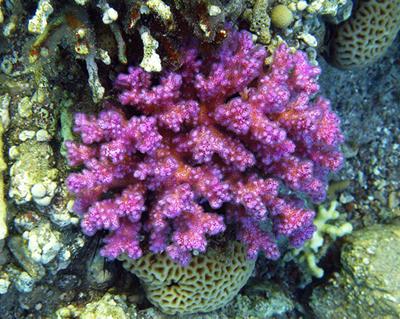Corals use colourful ‘sunscreens’ to protect against too much light

New research by Ocean and Earth scientists at the University of Southampton has discovered how corals use their pink and purple hues as sunscreen to protect them against damaging sunlight.
Many reef corals need light to survive, as they benefit from sugars and lipids that are produced by their light-dependent symbiotic algae. However too much light can be harmful in shallow water. This can also cause coral bleaching - the loss of the symbiotic algae which can threaten the survival of coral reefs.
Working in the Great Barrier Reef and under tightly controlled conditions in the Coral Reef Laboratory of the National Oceanography Centre Southampton, researchers produced experimental evidence that the pink and purple chromoproteins can act as sunscreens for the symbiotic algae by removing some of the light.
Dr Jörg Wiedenmann, Senior Lecturer of Biological Oceanography and Head of the University's Coral Reef Laboratory, who led the study, says: "The beautiful pink and purple hues that are produced by the coral host are often evoked by chromoproteins; pigments that are biochemically related to the green fluorescent protein (GFP) of the jellyfish Aequorea victoria. Our work yielded new mechanistic insights how these pigments fulfil an important protective function for the corals and their symbionic algae".
The research contributes to a better understanding of the coral's response to environmental stress. This knowledge is important to help predict the fate of coral reefs that are exposed to climate change and various forms of disturbance caused by humans. The paper is published in the latest edition of the journal Coral Reefs.
Related Staff Member
Links to external websites
The University cannot accept responsibility for external websites.